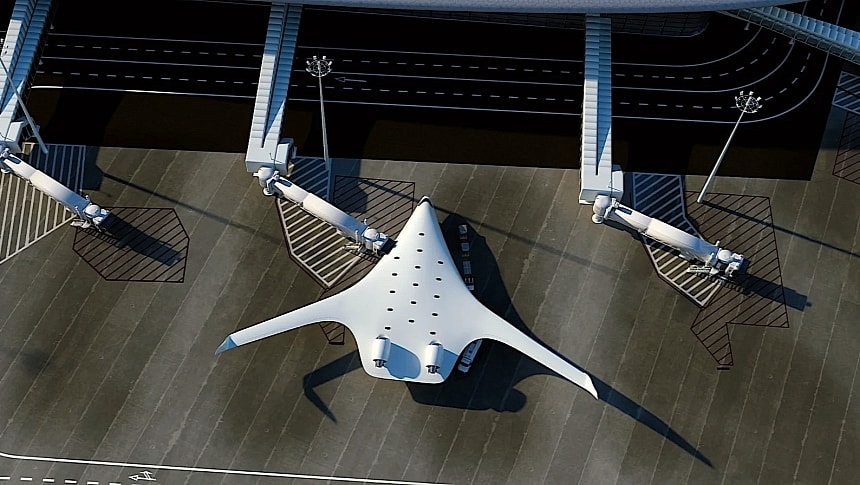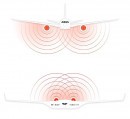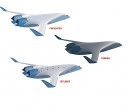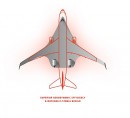As the U.S. Air Force is moving to modernize its fleet of aircraft, it is looking to new and innovative designs to help it advance its goals. And one such design is that of a blended-wing body aircraft, an idea on which the military branch plans to spend $235 million over the next four years.
A blended-wing body aircraft is something humanity has toyed around with before. It's a way of designing an airplane that in some sense is similar to both a flying wing (which technically has no standalone body) and a lifting body (which appears to have no wings). It also differs from them both, as it has both a body and wings, but no tail surfaces.
The first time a blended-wing body aircraft was designed was back in the 1920s, when something called the Westland Dreadnought was introduced. The experimental airplane flew only once, because it crashed and was destroyed.
The industry dropped efforts to develop such machines afterward, with the only ones to give them a shot being McDonnell Douglas and NASA in the 1990s with the BWB-17. Separately, companies Airbus and Bombardier made they own blended bodies, but none of these projects succeeded either.
Recent times have seen a resurgence of the interest in the design, with a number of startups considering it for their own projects.
One of the main reasons blended-wing aircraft failed to take hold on the market is the fact that its shape, which for instance doesn't allow for proper evacuation routes in case of an emergency, would make for a poor passenger aircraft.
But it could make a great cargo airplane, and that's exactly what the USAF is looking for, especially given the technical advancements made over the past few years. After all, these machines promise less aerodynamic drag, thus more efficient travel and better range, increased loitering times, and more cargo capacity.
It was in the summer of last year when the USAF announced it awarded a California-based company called JetZero a contract for the development of such an aircraft.
The project does not have a name yet, and it is in early stages of development. We do know it will be capable of running on 100 percent Sustainable Aviation Fuel (SAF), but will also be able to do that using hydrogen.
The JetZero aircraft will be made in three variants, namely jetliner, freighter, and trainer, and the first expected flight of the initial prototype is scheduled for 2027.
We brought up JetZero now because the company just announced a scale model of the blended-wing prototype, a machine called Pathfinder, and just received an Airworthiness Certificate from the FAA.
Pathfinder is a machine with a wingspan of just 23 feet (seven meters), but no other details are provided about it. There are plans to have it in the air soon, but the company does not reveal details on date and location either - we expect that to happen soon.
The first time a blended-wing body aircraft was designed was back in the 1920s, when something called the Westland Dreadnought was introduced. The experimental airplane flew only once, because it crashed and was destroyed.
The industry dropped efforts to develop such machines afterward, with the only ones to give them a shot being McDonnell Douglas and NASA in the 1990s with the BWB-17. Separately, companies Airbus and Bombardier made they own blended bodies, but none of these projects succeeded either.
Recent times have seen a resurgence of the interest in the design, with a number of startups considering it for their own projects.
One of the main reasons blended-wing aircraft failed to take hold on the market is the fact that its shape, which for instance doesn't allow for proper evacuation routes in case of an emergency, would make for a poor passenger aircraft.
But it could make a great cargo airplane, and that's exactly what the USAF is looking for, especially given the technical advancements made over the past few years. After all, these machines promise less aerodynamic drag, thus more efficient travel and better range, increased loitering times, and more cargo capacity.
It was in the summer of last year when the USAF announced it awarded a California-based company called JetZero a contract for the development of such an aircraft.
The project does not have a name yet, and it is in early stages of development. We do know it will be capable of running on 100 percent Sustainable Aviation Fuel (SAF), but will also be able to do that using hydrogen.
The JetZero aircraft will be made in three variants, namely jetliner, freighter, and trainer, and the first expected flight of the initial prototype is scheduled for 2027.
We brought up JetZero now because the company just announced a scale model of the blended-wing prototype, a machine called Pathfinder, and just received an Airworthiness Certificate from the FAA.
Pathfinder is a machine with a wingspan of just 23 feet (seven meters), but no other details are provided about it. There are plans to have it in the air soon, but the company does not reveal details on date and location either - we expect that to happen soon.










